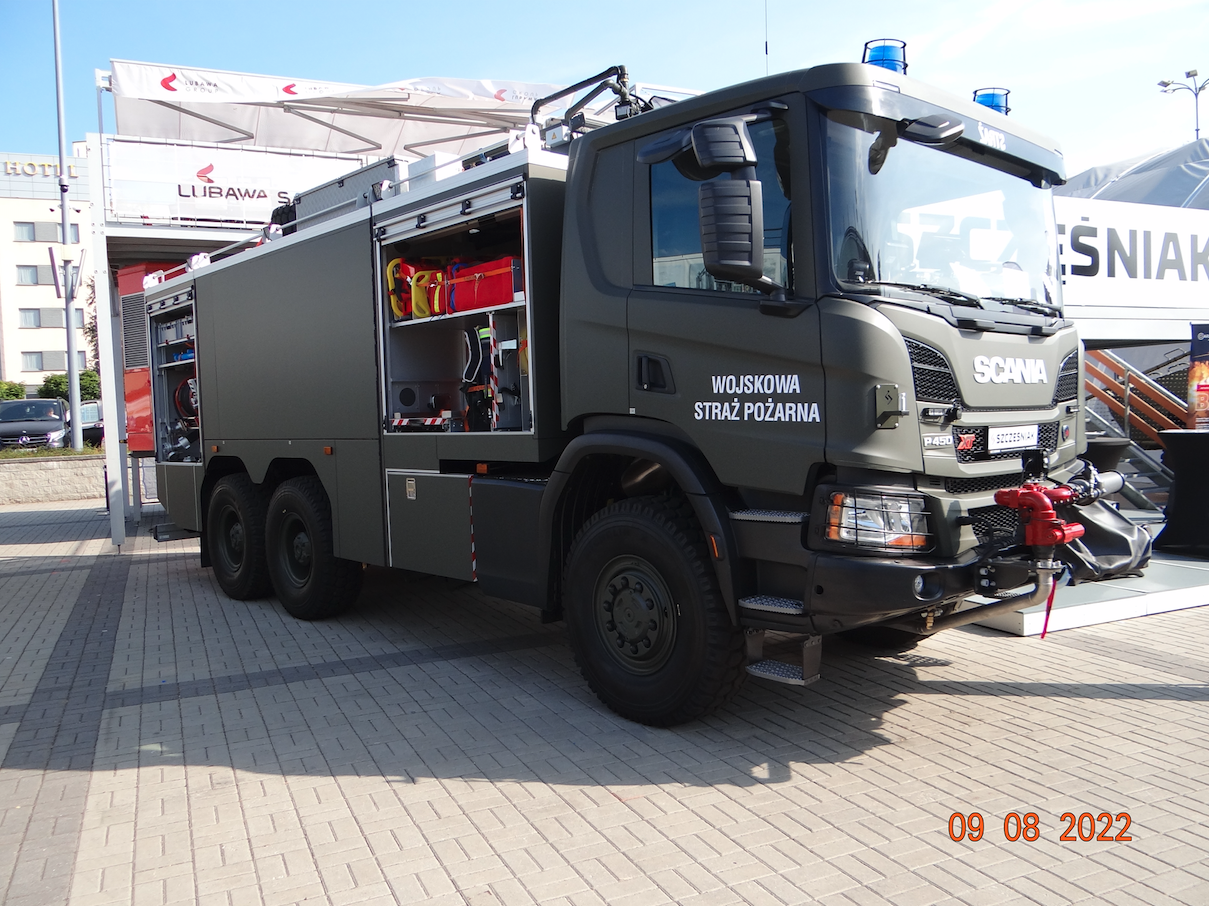Kraków 2017-10-16
Airport equipment.
Airport Fire Department.
Tasks of the Airport Fire Service.
Modern airplanes take on board even over 400 passengers and at the same time huge amounts of fuel. At the end of the 1940s, the largest aircraft took no more than several thousand liters of fuel on board. Modern large airplanes, both civil and military, take 180-230 thousand liters of fuel. For example, Antonov An-124 Ruslan takes 230,000 liters, Boeing B.747-200 takes 200,000 liters, Lockheed C-5 Galaxy takes 185,000 liters. In an emergency, this is a major fire hazard.
Statistics on fires and plane crashes show that 75% of them occur at or near the airport. In such a situation, the flight crew and passengers can count on ground rescue services, mainly the Airport Fire Department.
The airport fire brigade is an exceptionally highly specialized service derived from the classic fire brigade, operating at the airport and the adjacent area. In Poland, the Airport Fire Brigade operates under the "Polish Airports" State Enterprise. At the same time, the Airport Fire Brigade is included in the National Fire and Rescue System.
The airport fire brigade acts prophylactically and in fact in the event of an emergency or an already existing event. The basic activities of the Airport Fire Service are: participation in rescue and firefighting operations in the area of operation, participation in a rescue operation in the event of an air accident. The fire brigade takes action in emergency situations of an aircraft, eliminates the effects of an accident or disaster, protects some standard activities performed at the airport (e.g. landing of an aircraft in fog, refueling the aircraft with passengers on board, or cargo loading being carried out). Basically every time she is called.
The current goals of the Airport Fire Brigade are the result of analyzes of air disasters over the decades of aviation operation. Any airport with commercial activity must comply with the regulations issued by the International Civil Aviation Organization (ICAO). ICAO has determined the scope and method of carrying out rescue and firefighting operations depending on the size (category) of the airport and has established the necessary minimum forces and resources. These provisions are amended from time to time. Although these regulations are not in force at military airports, the Polish Army draws examples from them.
The success of a rescue operation, and thus saving the people on board the plane, is determined by such factors as: time, equipment and people, or rather their training. In modern airplanes, the fuselage melting time does not exceed 100 seconds. Analyzes have shown that from the announcement of the alarm, the first application of the extinguishing agent to a burning plane takes about 3 minutes or more. Therefore, the minimum is set at 3 minutes, but a maximum time of 2 minutes is recommended. In the event of an emergency landing, this time is not taken into account, because the combat vehicles already act as a backup. The time of fire elimination in 90% should not exceed 60 seconds, and complete extinguishing it without exceeding 120 seconds.
It is worth adding that fire resistance standards have also been imposed on aircraft manufacturers. For example, it specifies how long they are to withstand the flaming brakes of the landing gear of the main aircraft without spreading fire to the airframe.
ICAO, depending on the airport category, has established the minimum amounts of extinguishing agents and the number of combat vehicles. For this reason, there has been a division into rapid intervention combat vehicles and heavy water and foam vehicles for the past 70 years. At that time, all airport fire departments of large Western European airports had 2 or 3 times more firefighting equipment than required by the standard.
Due to the short time to take action, in the 90s, new fire stations of the Airport Fire Brigade began to be built near the take-off area, usually at the center of the main runway (RWY). As a result, many airports have two fire stations.
Written by Karol Placha Hetman

